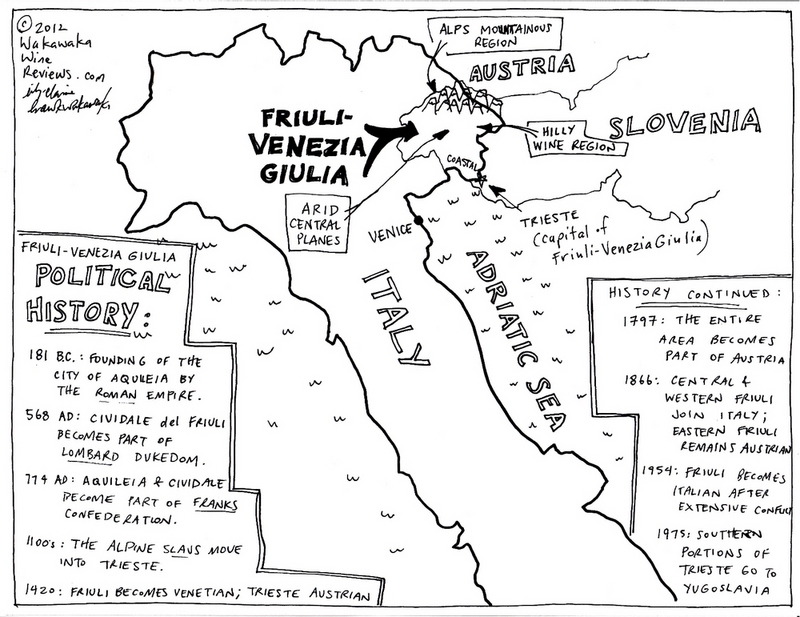The History of Friuli-Venezia Giulia
click on comic to enlarge
Friuli-Venezia Giulia now stands as the North-Eastern most region of Italy, resting at the border of Slovenia, and just south of Austria. The history of the region has undergone profound political change and influence, however, with its position at the top of Italy’s boot being largely settled after the Second World War, and then modified further as recently as 1975, after the Treaty of Osimo partitioned a portion of the Trieste region off for then Yugoslavia.
Friuli’s consistent changes in political affiliation link to its strong geographical position for Europe. At the North of the Adriatic sea, the area offers excellent water access, and additionally, its land location makes it the connecting point between Italy’s rich peninsula with Central and Eastern Europe. As a result, the location has been hotly desirable for world exchange and transport.
The importance of the location, and the influences of multiple empires through history has generated a unique Friulian culture with its own language, food, tradition, and more recently wine.
This week I am lucky enough to be one of six wine writers traveling to the region to explore the wine, food, and culture of Colli Orientali del Friuli. While there we’ll be eating at some of the best restaurants of the region, dining in the homes of some of the consortium’s top wine makers, visiting wineries, and tasting the area’s grapes.
I’ll be posting regular updates on the trip, and the six of us will also be keeping a conglomerate blog. I hope you’ll follow along here, and keep up with all our adventures on the group blog as well.
Here’s the link: http://cof2012.com/
See you in Cividale!


Can’t wait to catch up on this! Buon viaggio, and buon appetito!
[…] The Friuli region of Italy, in the furthest Northeast of the country, produces some of the finest white wines of the nation. With the cooling influence of the Adriatic to the south, and the winds it produces as the air rushes from the coastal low lands to the Alps in the north, the area is perfect for developing cooler climate whites, and lighter bodied reds. 62% of the wines produced in the area garner DOC (regulated regional quality) status. […]
[…] By Hawk Wakawaka. […]
[…] international varieties. Because of the diversely mixed political history of the region, the area has celebrated the introduction of grapes known more famously in other grape parts of the world. Unfortunately, in […]
[…] international varieties. Because of the diversely mixed political history of the region, the area has celebrated the introduction of grapes known more famously in other grape parts of the world. Unfortunately, in […]
[…] lowdown and run around on Friuli-Venezia Giulia. My fellow COF2012 blogger Wakawaka drew up this very handy map for us […]
[…] lowdown and run around on Friuli-Venezia Giulia. My fellow COF2012 blogger Wakawaka drew up this very handy map for us […]
[…] earth of appellation of Colli Orientali del Friuli, along the Slovenian border of Italy, hosts a mineral rich marl that is unique not only because of its blue color (all except […]
[…] earth of appellation of Colli Orientali del Friuli, along the Slovenian border of Italy, hosts a mineral rich marl that is unique not only because of its blue color (all except […]
[…] Felluga helped develop the wine industry of Friuli-Venezia Giulia. Beginning his vineyard projects immediately after the region became part of the country of Italy, Felluga faced the challenges of a post-war countryside. The region had suffered particular […]